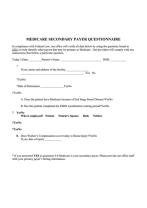How to write a case study on a patient?
Writing a patient case study involves documenting and analyzing a patient's medical history, symptoms, diagnosis, treatment, and outcomes. Here is a comprehensive guide on how to write a patient case study:
1. Select a Patient:
- Choose a patient whose medical condition is relevant to your study or educational goals.
- Ensure patient confidentiality and obtain informed consent if necessary.
2. Patient Background:
- Provide essential demographic information, including age, gender, occupation, and relevant medical history.
- Include any relevant social, family, or lifestyle factors.
3. Chief Complaint and Presenting Symptoms:
- Describe the reason for the patient's visit or admission.
- Document the patient's presenting symptoms, their duration, and any changes over time.
4. Medical History:
- Detail the patient's past medical history, including chronic illnesses, surgeries, hospitalizations, and medications.
- Highlight any family medical history that may be relevant.
5. Physical Examination:
- Describe the findings from the patient's physical examination.
- Include vital signs, general appearance, and any abnormal physical findings.
6. Diagnostic Tests:
- List and interpret relevant diagnostic tests, such as blood work, imaging (X-rays, CT scans, MRIs), and biopsies.
- Include dates and results.
7. Diagnosis:
- Provide the final diagnosis or differential diagnoses.
- Explain the rationale behind the diagnosis, including how it was reached.
8. Treatment Plan:
- Detail the treatment plan, including medications, procedures, surgeries, and any lifestyle modifications.
- Explain the goals of treatment and the expected outcomes.
9. Follow-Up:
- Document the patient's progress during treatment.
- Include any adjustments made to the treatment plan.
- Note any complications or side effects.
10. Outcome and Conclusion:- Summarize the patient's overall response to treatment.- Discuss the prognosis and any long-term considerations.- Offer conclusions, insights, or lessons learned from the case.
11. Discussion and Analysis:- Analyze the case in the context of existing medical literature.- Discuss the significance of the case and any unique aspects.- Consider how the case contributes to medical knowledge or practice.
12. References:- Cite any sources, medical literature, or guidelines used in your analysis.
13. Patient Consent and Confidentiality:- Ensure that the patient's identity is protected.- Obtain written consent from the patient if necessary.
14. Formatting and Presentation:- Organize the case study in a clear, logical manner.- Use headings and subheadings to structure the document.- Proofread for accuracy and clarity.
Remember to follow ethical guidelines and maintain patient confidentiality throughout the case study writing process. Case studies are valuable for medical education, research, and sharing clinical experiences, but they must be handled with care and professionalism.













